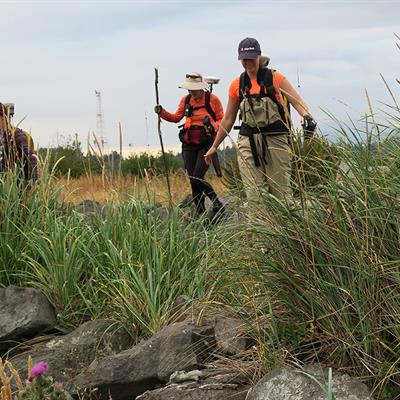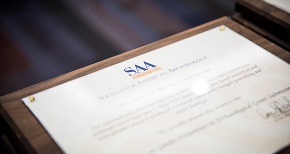
Registration Closed!
Magnetometer Survey for Archaeology
When: September 02, 2020 2:00-4:00 PM ET
Duration: 2 hours
Certification: RPA-certified
Pricing
Individual Registration: $99 for SAA members; $149 for non-members
Group Registration: $139 for SAA members; $189 for non-members
Jarrod Burks is a professional archaeologist specializing in the application of geophysical surveys in archaeological contexts. Dr. Burks is the Director of Archaeological Geophysics for Ohio Valley Archaeology, Inc., a private archaeology firm in Columbus, Ohio. He received his PhD and MA degrees in anthropology (archaeology) from The Ohio State University and his BA degree in anthropology from the University of Illinois at Urbana/Champaign. Dr. Burks’s training in archaeological geophysics has been honed through over 20 years of work in the field, as well as attending and teaching at the National Park Service’s “Current Archeological Prospection Advances for Non-destructive Investigations” since 2001.
Magnetometer surveys are an important part of the archaeologist’s toolkit. In this seminar, we will explore the nuts and bolts of magnetometry from the beginner to moderate level. Topics will range from the basics of why and how the archaeological record is magnetic, to exploring the various kinds of instruments available today, and how to process data. We will look at good data and bad, small archaeological features and large. Examples include pre-contact period American Indian sites and historic-era sites such as farmsteads and urban/industrial sites. Finally, we will spend some time examining the use of magnetometers in burial surveys.
- Understand how magnetometers work and the range of instruments now available to archaeologists.
- See what good and bad data processing look like to help establish expectations in those who want to do magnetic survey or evaluate the results of others.
- Explore the different settings (terrestrial) in which magnetometers can be used.
- See how different kinds of archaeological features appear in magnetic data, and develop an understanding of the importance of contrast as it relates to detectability.


